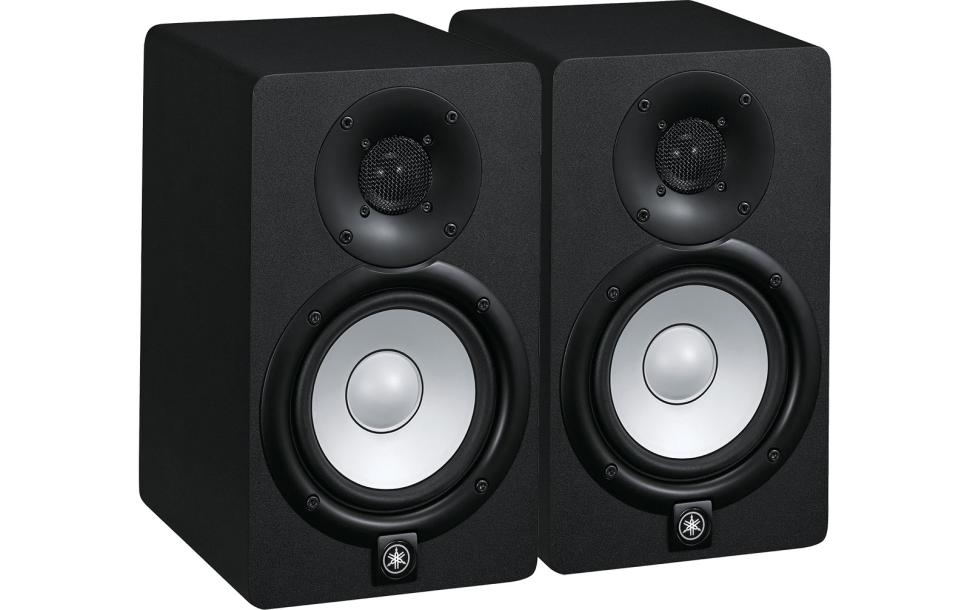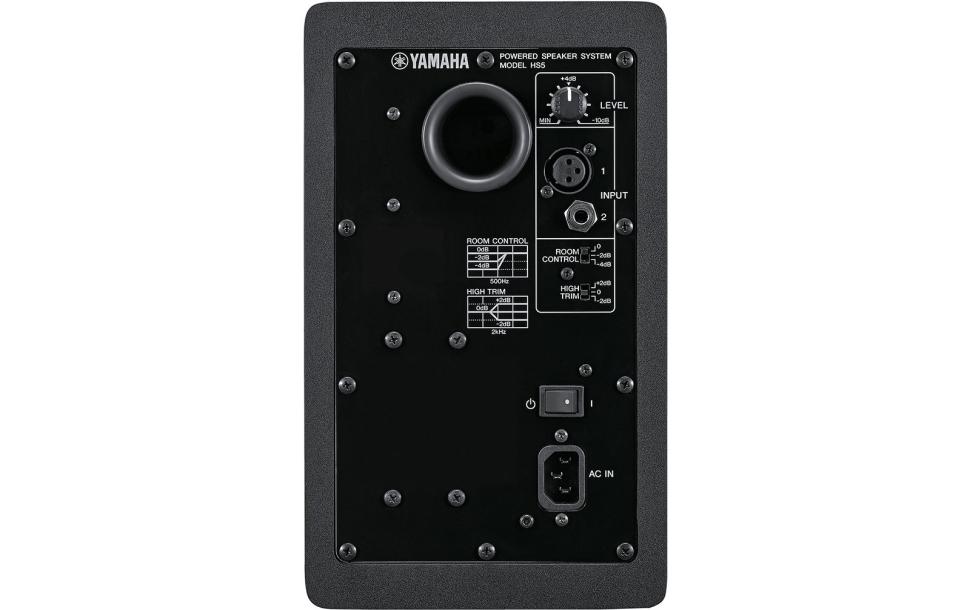Review: Yamaha HS5 MP

2-Way Active Monitor
We have tested the smallest and cheapest model in the series, the HS5. These are active near-field monitors with a two-way system consisting of a 1“ tweeter and a 5“ woofer, driven by separate 25 Watt and 45 Watt power amplifiers. The distinguishing feature of the series, the white colored woofer, has remained unchanged.
The crossover frequency between the woofer and tweeter is 2 kHz, and Yamaha lists 54 Hz to 30 kHz as the displayable frequency range. Given the size of the HS5, you shouldn‘t expect a bass miracle, because the HS5 has not been tweaked in this respect, but rather the emphasis has been placed on linear reproduction.
The HS5 (Checkout in the Thomann shop) is, therefore, recommended for smaller rooms where too much energy in the bass range can have a rather negative effect; otherwise, adding a subwoofer can supplement the missing bass boost. Yamaha offers the HS8S, a model that is specially designed for this system.
Very Good Build Quality
The MDF case with dimensions of 170 x 285 x 222 mm is robust and flawlessly finished and makes a valuable impression: the low price is not noticeable, at least not on the outside. The HS5, at 5.3 kg per box, is no lightweight. The bass reflex port is located at the rear, so make sure that the speakers are placed at a suitable distance from walls and corners. If this isn‘t really possible, the HS5 offers two equalizer bands for bass and treble. With these controls, you can make the usual corrections that are necessary, for example, when the unit is placed directly on a wall. Room Control allows you to cut by 2 or 4 dB at 500 Hz, while High Trim allows you to cut or boost treble by 2 dB at 2 kHz.
The audio source is connected via XLR or jack. The volume of the output level can be continuously adjusted, locks in the middle at +4dB and expects -10dB home studio level when turned to the right. All jacks are balanced to eliminate noise. The power supply is provided via standard power cord.

Matched Pair
The HS5 MP are sold as „matched pairs“. The matched pairs of speakers have matching serial numbers and are assembled with specially selected components during production to further reduce the already minimal influence of component tolerances. The result is a pair of matched loudspeakers that are designed to excel in terms of spatiality and detail. In the sound test, the precise directivity of the tweeters was first thing we noticed, so the perfect sweet spot is limited and the speakers should be aimed directly at the listening position. For beginners, in particular, the detailed placement instructions in the manual are helpful. Noise is not audible at normal listening volume. Very nice!
Unhyped Linear Sound
In terms of sound, the HS5s live up to their reputation, and the reproduction is very linear and analytical. Overmodulation and errors in the mix are mercilessly revealed by the present, but not overemphasized highs. Nothing is embellished in the area of the lower midrange and bass either, as is often the case with other cheap speakers. Only the area directly above the 2 kHz crossover frequency was less pleasing; vocals and guitars lacked a little detail and naturalness. The HS5 also can‘t quite keep up with more expensive speakers in terms of impulse response HS5.
Verdict
The excellently built HS5 MP (Checkout Yamaha HS5 MP in the Thomann shop) are very compelling with a very balanced sound image and without any noteworthy sound coloration when correctly positioned. This can be very sobering at first, but the HS5 are not „fun“ speakers, they are working tools. The HS5 MPs are particularly suitable for smaller project studios and can save you the frustration of having to listen to your own mix on other monitors; however, the HS5 MP are also recommended as a second monitor.
Want more? Get more!



Subscribe to the digital edition of BEAT Magazine via Plugins-Samples.com and get more gear, in-depth workshops, reviews and 11 GB exclusive plugins and new sounds with every monthly issue!
Subscribe to Beat Magazine for only 4.99€ per month
